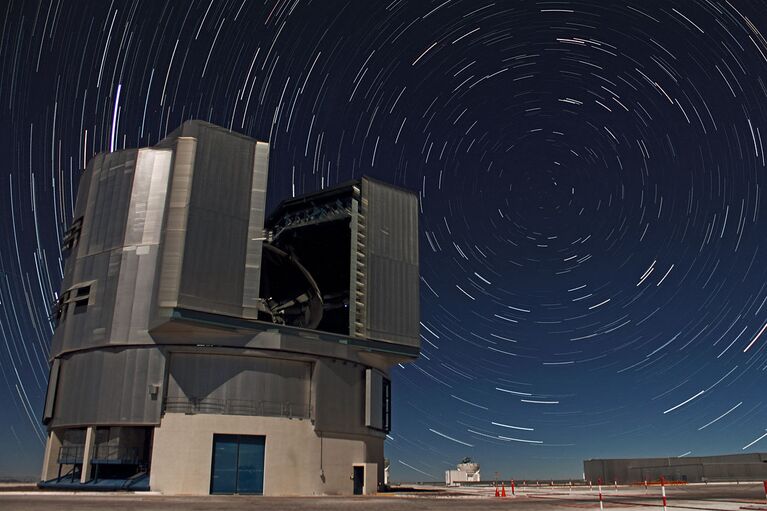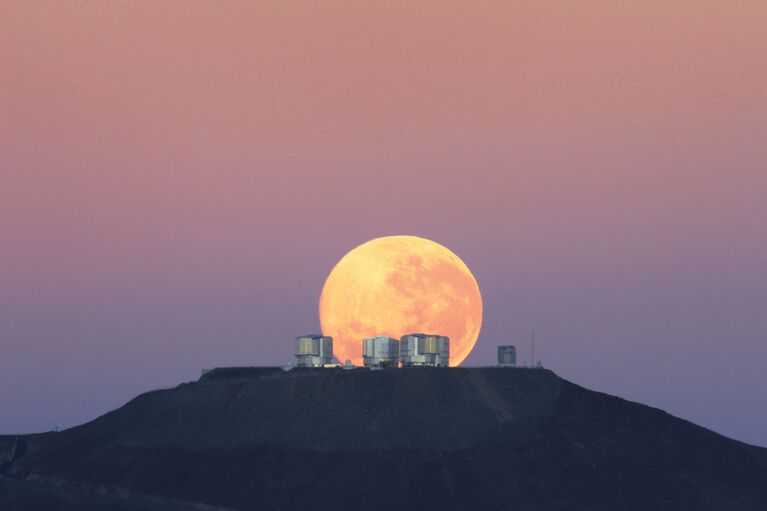Один из самых мощных астрономических инструментов в истории, телескоп Very Large Telescope Европейской южной обсерватории (ESO), в субботу отметит 15-летие. Самые яркие, необычные и интересные снимки телескопа — в фотоленте РИА Новости.
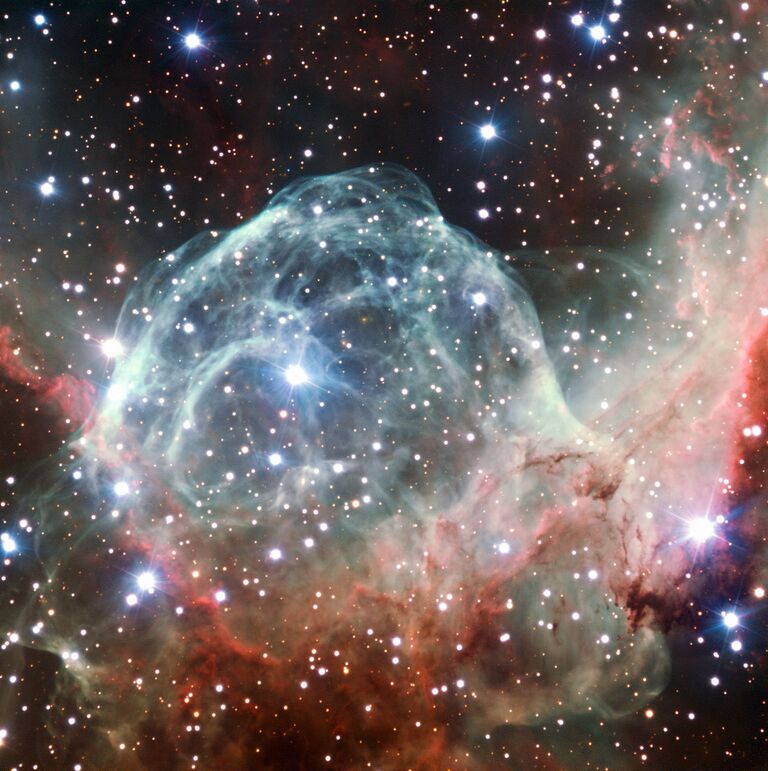
This VLT image of the Thor’s Helmet Nebula was taken on the occasion of ESO’s 50th Anniversary, 5 October 2012, with the help of Brigitte Bailleul — winner of the Tweet Your Way to the VLT! competition. The observations were broadcast live over the internet from the Paranal Observatory in Chile. This object, also known as NGC 2359, lies in the constellation of Canis Major (The Great Dog). The helmet-shaped nebula is around 15 000 light-years away from Earth and is over 30 light-years across. The helmet is a cosmic bubble, blown as the wind from the bright, massive star near the bubble's centre sweeps through the surrounding molecular cloud.
1 из 12
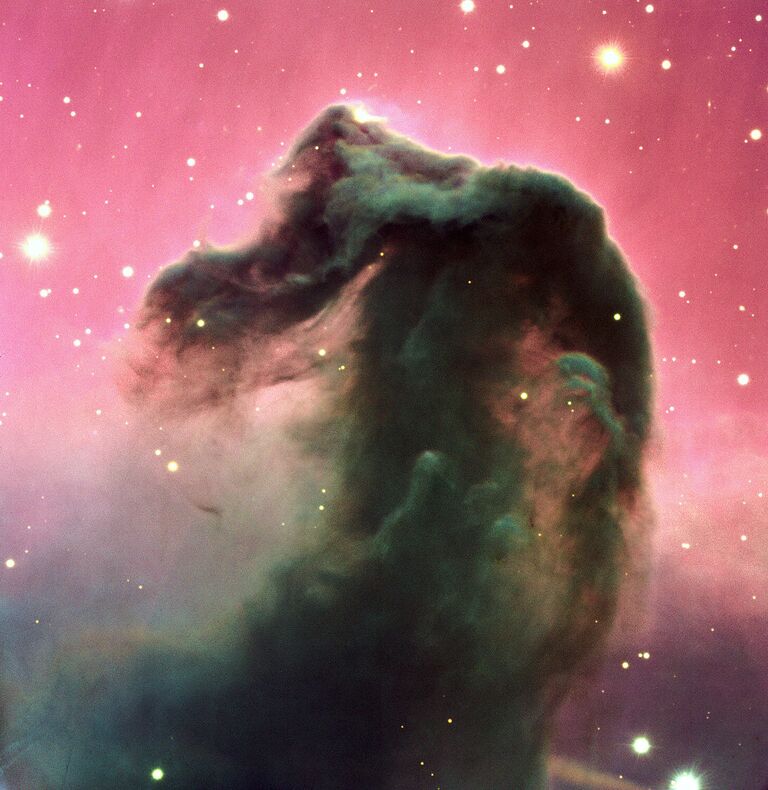
A reproduction of a composite colour image of the Horsehead Nebula and its immediate surroundings. It is based on three exposures in the visual part of the spectrum with the FORS2 multi-mode instrument at the 8.2-m KUEYEN telescope at Paranal. It was produced from three images, obtained on February 1, 2000, with the FORS2 multi-mode instrument at the 8.2-m KUEYEN Unit Telescope and extracted from the VLT Science Archive Facility . The frames were obtained in the B-band (600 sec exposure; wavelength 429 nm; FWHM 88 nm; here rendered as blue), V-band (300 sec; 554 nm; 112 nm; green) and R-band (120 sec; 655 nm; 165 nm; red). The original pixel size is 0.2 arcsec. The photo shows the full field recorded in all three colours, approximately 6.5 x 6.7 arcmin 2 . The seeing was about 0.75 arcsec.
2 из 12
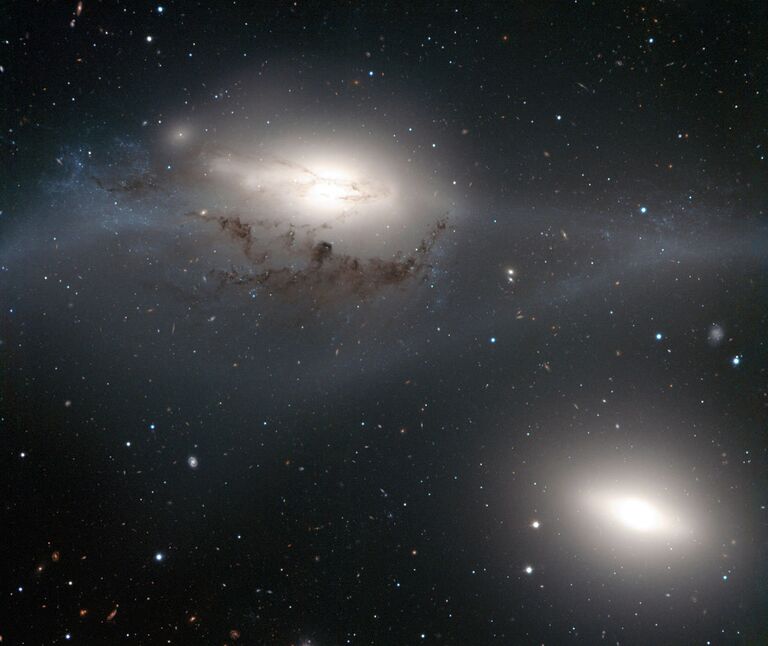
This striking image, taken with the FORS2 instrument on the Very Large Telescope, shows a beautiful yet peculiar pair of galaxies, NGC 4438 and NGC 4435, nicknamed The Eyes. The larger of these, at the top of the picture, NGC 4438, is thought to have once been a spiral galaxy that was strongly deformed by collisions in the relatively recent past. The two galaxies belong to the Virgo Cluster and are about 50 million light-years away.
3 из 12
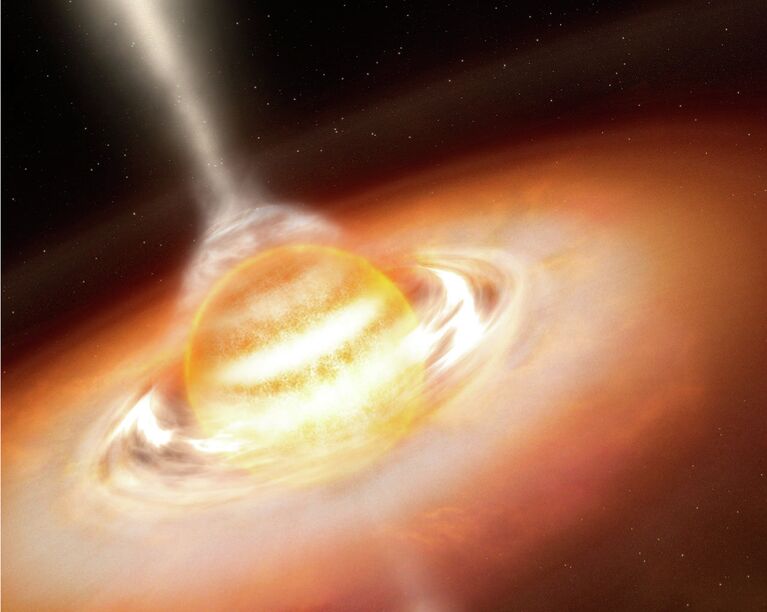
Using ESO's VLT, astronomers found jets coming out from a 24 Jupiter-mass brown dwarf, showing that outflows are rather ubiquituous in the Universe and leading to the prospect that that young giant planets could also be associated with outflows.
4 из 12
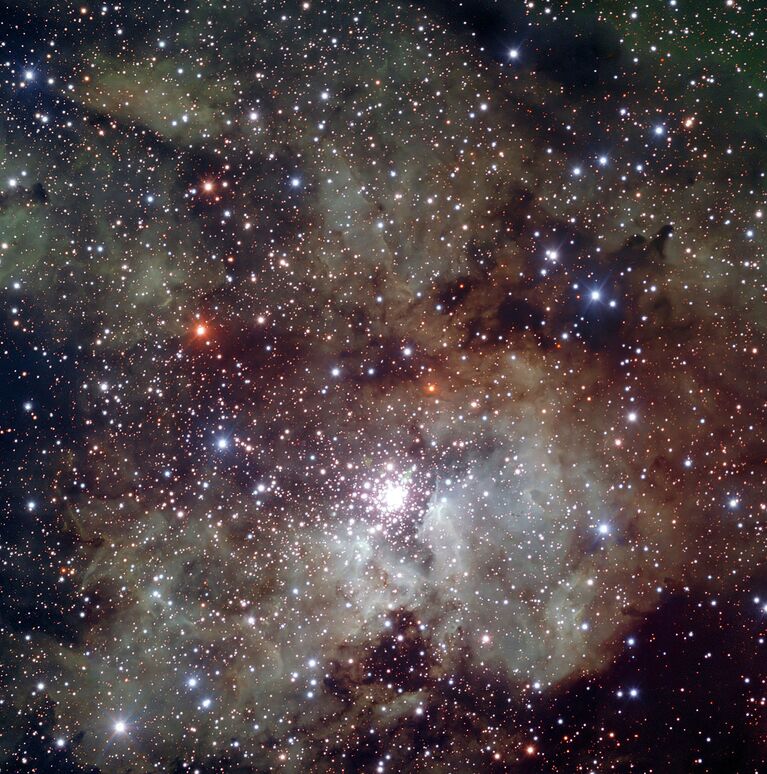
Скопления молодых звезд NGC 3603, расположенное в 22 тысячах световых лет от Солнца.
5 из 12
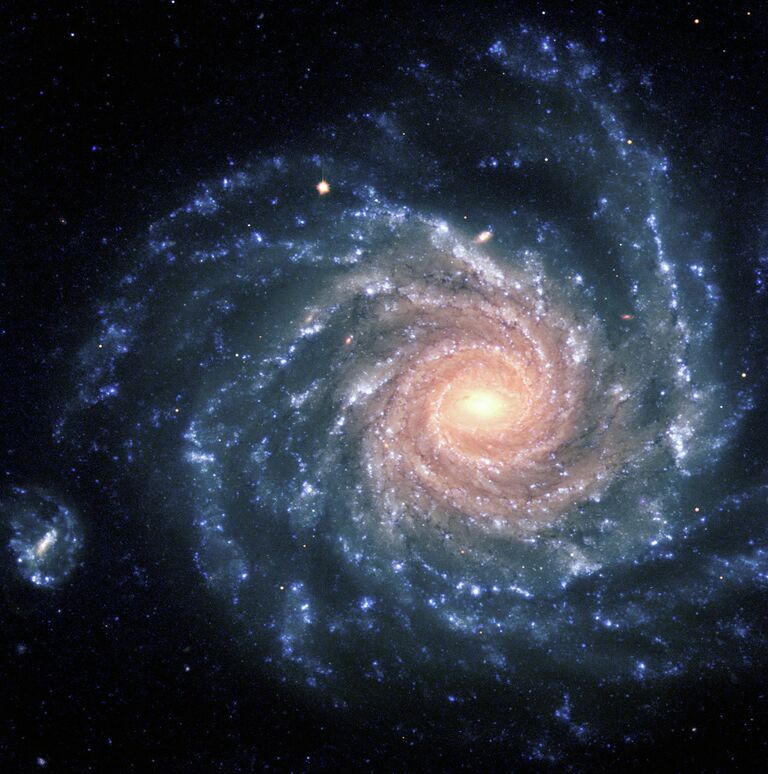
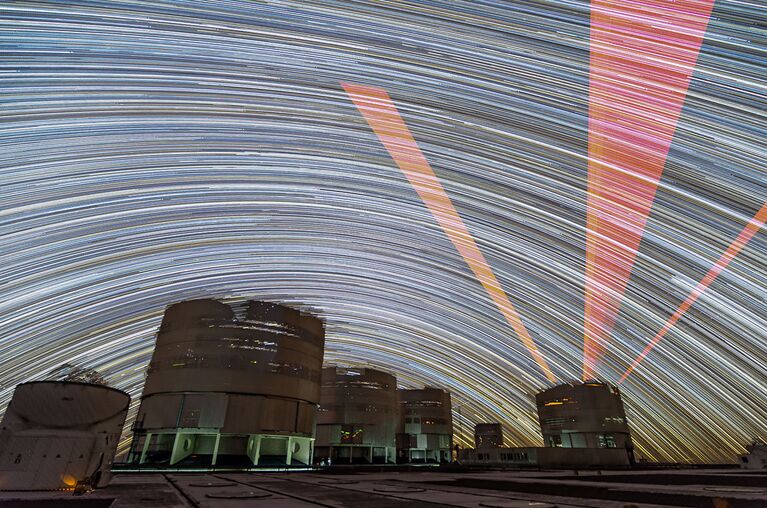
Сейчас VLT представляет собой четыре основных телескопа с зеркалами диаметром 8,2 метра и четыре подвижных дополнительных 1,8-метровых телескопа.
7 из 12
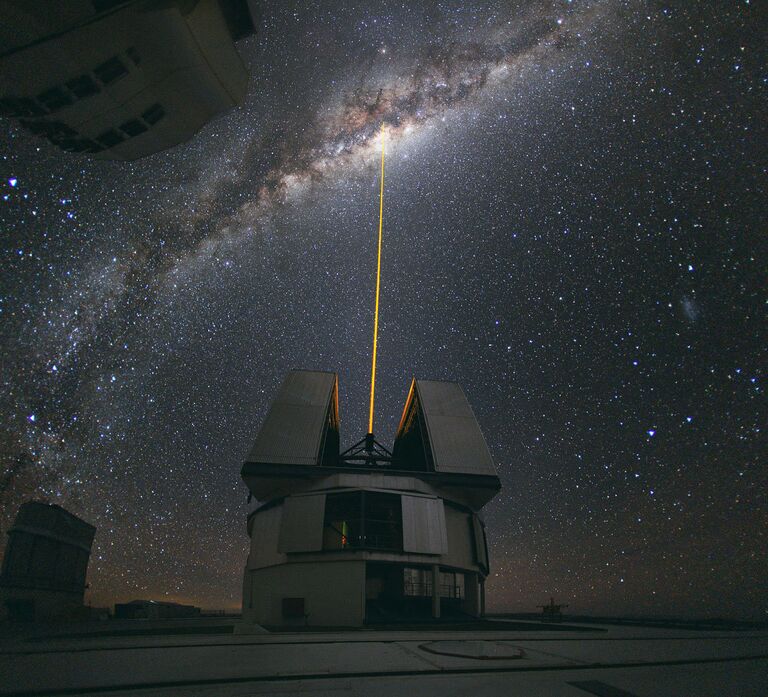
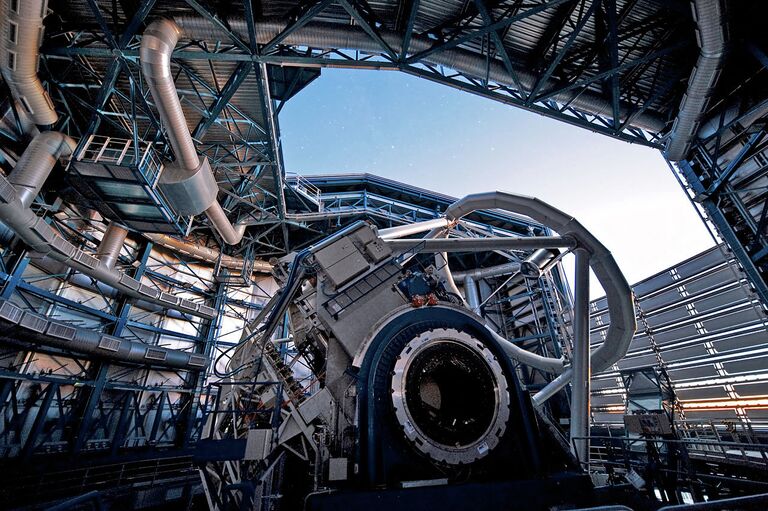
В группе оптических инструментов по количеству научных результатов VLT уступает только космическому телескопу "Хаббл".
9 из 12

